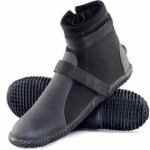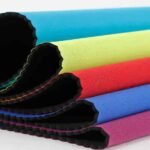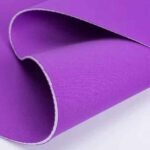When it comes to selecting the right material for various products, from wetsuits to protective gear, neoprene and Neosupreme are two popular options. Both materials have their advantages, but understanding their differences can help you make the right choice for your needs. In this article, we’ll explore what each material is, how they compare, and which one might be better suited for different applications.
Neoprene and Neosupreme are often discussed together because they share many similarities, but they also have key differences that set them apart. Let’s explore these materials in detail to help you understand how each one performs.
What Is Neoprene?
Neoprene is a type of synthetic rubber made from the polymer chloroprene. It is known for its flexibility, durability, and resistance to various environmental factors such as water, heat, and chemicals. Neoprene is commonly used in products that require both insulation and protection, such as wetsuits, gloves, knee pads, and laptop sleeves.
One of the main advantages of neoprene is its ability to provide excellent thermal insulation. This makes it ideal for water sports, where keeping warm in cold water is essential. Neoprene’s elasticity also allows it to stretch, ensuring a snug fit for the wearer. It’s also resistant to abrasion, making it highly durable and capable of withstanding wear and tear.
Neoprene is widely used across a range of industries, including medical, automotive, and sports equipment. Its versatility and durability make it a go-to material for many applications.
What Is Neosupreme?
Neosupreme is a type of material that is a variation of neoprene. It is designed to offer some of the same properties as neoprene, but with additional benefits such as improved heat retention and increased flexibility. Neosupreme is made by incorporating additional materials into the manufacturing process, such as polyester and nylon. This gives Neosupreme a distinct feel and performance that makes it suitable for different applications than standard neoprene.
Neosupreme shares many of the key characteristics of neoprene, including its water resistance and insulating properties. However, it is often softer and lighter than traditional neoprene. This makes it particularly well-suited for products that need to be comfortable and flexible while still providing durability and warmth.
It is commonly used in the production of water sports gear, such as wetsuits, gloves, and boots, as well as in products like laptop sleeves and protective covers. Neosupreme offers a higher level of comfort compared to standard neoprene, which can make it more appealing for extended use.
What Is the Difference Between Neoprene and Neosupreme?
The primary difference between neoprene and Neosupreme lies in their composition and resulting performance characteristics. While both materials are based on synthetic rubber, Neosupreme incorporates additional materials like polyester and nylon, which enhance its flexibility and comfort.
-
Flexibility: Neosupreme tends to be more flexible and lighter than neoprene. The addition of polyester and nylon makes it more pliable, which enhances comfort for users, especially in products that need to mold to the body, such as wetsuits and gloves.
-
Insulation: Both materials are excellent at retaining heat, but Neosupreme typically offers better insulation properties, making it ideal for cold-water activities.
-
Durability: Neoprene is highly durable and resistant to wear and tear, particularly in harsh conditions. While Neosupreme is durable, its added flexibility may make it slightly less resistant to abrasion over time compared to neoprene.
-
Comfort: Neosupreme is generally softer and more comfortable than neoprene, making it ideal for items that require prolonged wear, such as protective gloves or wetsuits.
In essence, while both materials share common features, Neosupreme is an upgraded version of neoprene designed to offer enhanced comfort and flexibility, with better heat retention for water sports and outdoor activities.
Which Is Better, Neoprene or Neosupreme?
Choosing between neoprene and Neosupreme depends largely on the specific needs of your product or application. Each material has its own set of strengths, and the "better" option will vary depending on what you’re looking for.
-
For Durability and Longevity: Neoprene is the better choice. It is highly resistant to wear and tear and is often used in products that are exposed to rough conditions, such as knee pads, automotive parts, and wetsuits that require long-lasting durability.
-
For Comfort and Flexibility: Neosupreme may be a better option if comfort and flexibility are your primary concern. Its softer texture and increased pliability make it an ideal choice for clothing items like wetsuits and gloves that need to move with the body.
-
For Water Sports: Both materials perform well in water-based environments, but Neosupreme is particularly effective in providing warmth and flexibility, making it a better choice for extended use in cold-water sports.
-
For Cost-Effectiveness: Neoprene is generally more affordable than Neosupreme. If cost is a concern and you don’t need the extra comfort or flexibility, neoprene may be the better choice.
Ultimately, it comes down to the specific needs of your project or product. If comfort, warmth, and flexibility are paramount, Neosupreme could be the right material for you. On the other hand, if durability and longevity are more important, traditional neoprene may be the better option.
What Are the Main Applications of Neoprene and Neosupreme?
Both neoprene and Neosupreme are used in a variety of applications, with each material being more suited to certain environments or products.
-
Neoprene Applications:
- Wetsuits and Dive Gear: Neoprene’s excellent insulation properties make it ideal for cold-water sports.
- Gloves and Protective Gear: Neoprene is commonly used in gloves, knee pads, and elbow pads, offering both comfort and durability.
- Automotive and Industrial: Neoprene is used in gaskets, seals, and other industrial components due to its resistance to chemicals and temperature extremes.
- Medical and Healthcare: Neoprene is used in braces, supports, and medical compression garments for its flexibility and support.
-
Neosupreme Applications:
- Wetsuits and Water Sports Gear: Neosupreme is ideal for wetsuits, diving suits, and other water sports equipment, as it provides comfort, flexibility, and thermal protection.
- Laptop Sleeves and Protective Covers: Neosupreme’s soft, lightweight properties make it a great choice for protective covers for electronics.
- Casual Wear and Clothing: The flexibility and comfort of Neosupreme make it a popular choice for clothing, including jackets and accessories.
While both materials have diverse uses, Neoprene tends to be favored in environments where durability and toughness are needed, while Neosupreme is better for products that prioritize comfort and flexibility.
Conclusion
Neoprene and Neosupreme are both excellent materials, but they serve different needs based on their unique properties. Neoprene is more durable and better suited for tough environments, while Neosupreme excels in providing extra flexibility and comfort, making it perfect for extended wear. Choosing between the two comes down to the specific application and requirements of your product.
At Szoneier, we specialize in providing high-quality custom solutions using both neoprene and Neosupreme. Whether you need durable gloves, protective gear, or custom wetsuits, we have the expertise to deliver products tailored to your needs. Contact us today to inquire about our customization options and get the best materials for your products.











